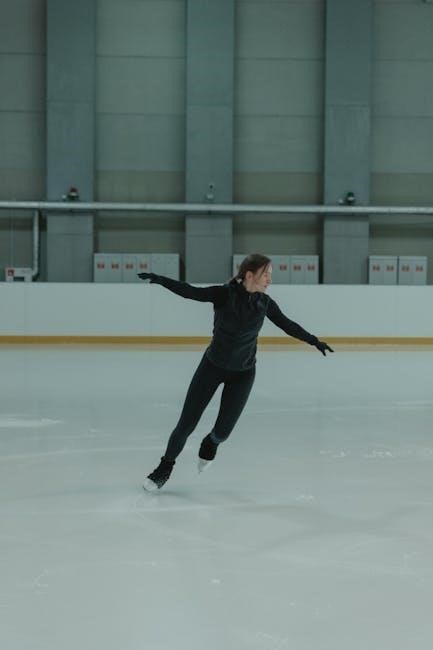Scapular exercises are designed to improve shoulder blade movement and strength, using
- simple
and effective methods for better posture and reduced pain, as seen in many online pdf guides available.
Importance of Scapular Stability
Scapular stability is crucial for maintaining proper posture and preventing injuries, as it allows for efficient movement of the shoulder joint and surrounding muscles. A stable scapula provides a foundation for the arm to move freely, reducing the risk of strain and discomfort. Without scapular stability, everyday activities can become challenging and painful. The importance of scapular stability is often overlooked, but it plays a significant role in overall shoulder health. By incorporating exercises that target scapular stability, individuals can improve their range of motion, reduce pain, and enhance athletic performance. A well-stabilized scapula is essential for optimal shoulder function, making it a critical component of any exercise program, as discussed in various online resources and pdf guides available on the topic of scapular exercises. Regular exercise can help improve scapular stability and overall shoulder health.

Preparation for Scapular Exercises
Proper preparation involves creating a
- safe
and comfortable environment for exercises, with minimal distractions, as outlined in various scapular exercises pdf guides available online today always.
Warm-up and Stretching
To begin a scapular exercise routine, it is essential to start with a proper warm-up and stretching session, as outlined in various scapular exercises pdf guides. This involves a series of light cardio exercises, such as jogging in place or jumping jacks, to increase blood flow and temperature in the muscles. Following the warm-up! a thorough stretching session should be performed, focusing on the shoulder and upper back regions. This can include exercises such as arm circles, shoulder rolls, and chest stretches, all of which help to improve flexibility and reduce the risk of injury. By incorporating a warm-up and stretching routine into a scapular exercise program, individuals can help ensure a safe and effective workout, as recommended by many online resources and scapular exercises pdf guides available today for download. Proper warm-up and stretching are crucial for a successful exercise routine.
Scapular Exercises for Strengthening
Scapular exercises strengthen muscles using
- various
methods for improved posture and reduced pain always.
Home Exercise Program
A home exercise program for scapular exercises typically involves a series of exercises that can be done at home with minimal equipment, such as light weights or resistance bands, and can be found in many online pdf guides. The program usually consists of a combination of exercises that target the muscles of the scapula, including the trapezius, rhomboids, and levator scapulae. Patients are often advised to start with gentle exercises and gradually increase the intensity and duration as their strength and endurance improve. It is essential to follow a structured program and to listen to your body, stopping if you experience any pain or discomfort. A physiotherapist or healthcare professional can help design a personalized home exercise program tailored to your specific needs and goals, and provide guidance on proper technique and progression. Regular practice and patience are key to achieving success with a home exercise program.

Performing Scapular Exercises Correctly
Proper technique is crucial when performing scapular exercises, using slow and controlled movements with minimal weights initially, as outlined in many online exercise guides and pdf resources available.
Control and Smooth Movement
Control and smooth movement are essential when performing scapular exercises, allowing for optimal muscle engagement and reduced risk of injury. Using slow and deliberate movements, individuals can target specific muscle groups and improve overall scapular stability. The importance of control and smooth movement cannot be overstated, as jerky or bouncy movements can put unnecessary strain on the muscles and joints. By focusing on controlled movements, individuals can improve their posture, reduce pain and discomfort, and enhance their overall functional ability. Many online resources, including pdf guides, provide detailed instructions and illustrations to help individuals master proper technique and achieve optimal results from their scapular exercises, with a focus on control and smooth movement being a key component of these programs, leading to better outcomes and reduced risk of injury, and improved overall muscle function.

Using Weights in Scapular Exercises
Weights can enhance scapular exercises, increasing strength and resistance, using light weights initially, as seen in online pdf guides and tutorials, for progressive overload and muscle development slowly.
Starting with Light Weights
When incorporating weights into scapular exercises, it is essential to start with light weights and gradually increase the load. This approach allows the muscles to adapt and strengthens the scapular stabilizers. Using light weights, such as a small can or water bottle, can be an effective way to begin. As the exercises become easier, the weight can be progressively increased. It is crucial to focus on controlled movements and avoid jerky actions, which can put unnecessary strain on the muscles. By starting with light weights and emphasizing proper technique, individuals can minimize the risk of injury and maximize the benefits of scapular exercises. A well-structured weight program can be found in various online pdf guides, providing a comprehensive approach to scapular strengthening and stabilization. Regular practice and gradual progression are key to achieving optimal results.

Common Scapular Exercises
Scapular exercises include arm raises and shoulder blade squeezes, using online
- guides
for proper techniques and muscle strengthening benefits always.
Scapular Depression and Arm Raises
Scapular depression and arm raises are essential exercises for improving scapular stability and strength, as outlined in many online pdf guides. These exercises involve slowly raising the arms while maintaining scapular depression, which helps to strengthen the muscles of the shoulder blade. By incorporating these exercises into a regular routine, individuals can improve their posture, reduce pain and discomfort, and enhance overall shoulder function. The exercises can be modified to suit different fitness levels, and it is recommended to start with slow and controlled movements, gradually increasing the speed and intensity as comfort and strength improve. Regular practice of scapular depression and arm raises can help to improve overall shoulder health and reduce the risk of injury, making them a valuable addition to any exercise program. Proper technique is essential for maximum benefit.
and Recommendations
Regular scapular exercises improve posture and reduce pain, as seen in many online pdf guides and resources available for download and reference purposes always.
Consulting a Physiotherapist
Consulting a physiotherapist is a crucial step in developing an effective scapular exercise program. They can assess an individual’s overall shoulder health and provide personalized recommendations. A physiotherapist can help identify any underlying issues that may be contributing to scapular instability or pain. They can also demonstrate proper exercise techniques and provide guidance on how to progress exercises as strength and mobility improve. Additionally, a physiotherapist can help individuals modify exercises to accommodate any physical limitations or discomfort. By working with a physiotherapist, individuals can ensure they are performing exercises safely and effectively, which can lead to better outcomes and reduced risk of injury. Many physiotherapists also provide online resources, including pdf guides, to support patients in their exercise programs. Regular follow-up appointments can help track progress and make any necessary adjustments to the exercise program.



